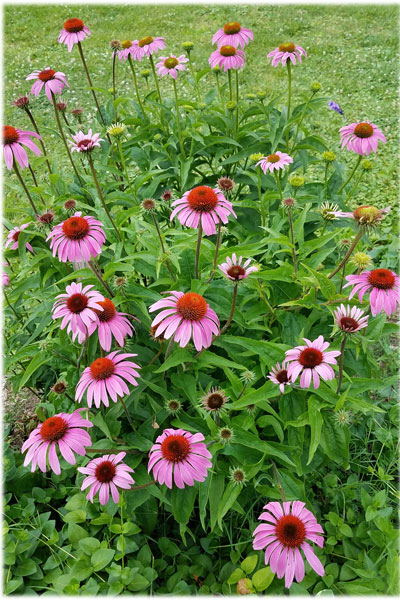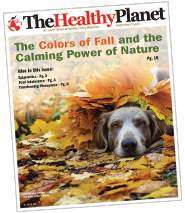
By Linda Wiggen Kraft
Healthy Planet Green & Growing Editor
A garden isn’t only a collection of plants, it is a community of connections. It is a network of life forms and forces, an eco-system. Plants, insects, birds, soil, sun, rain are each part of the connection. The strongest connections are those of native plants and native insects and animals.
Why do native plants have the strongest connections? They have local relationships with other life forms that evolved together over thousands of years in ways that non-native plants didn’t. Plants have flowers that need pollinators to ensure seeds will be produced. A flower has nectar and pollen that bees and other insects need. As insects collect nectar and pollen the flower is fertilized and seeds are produced. The insects themselves and seeds feed birds. Over time flower shapes have evolved to fit the body parts of specific pollinators. Those that evolved together have adapted to ensure the life of each other. Pollination only takes place with these matches, kind of like a lock and a key. Some flowers have matches with many insect pollinators, but others are very specific. In Missouri there are over 450 native bee species that depend of flowers that match their needs.
Purple Coneflower (echinacea) is a favorite garden plant. Its cone shaped flower head attracts us with its beauty. It also attracts many insect pollinators including bumble bees, sweat bees, sunflower bees along with monarch, swallowtail and sulphur butterflies. Sunflowers (helianthus) are native plants. There are many annual sunflowers along with perennial ones. All attract many different pollinators and provide seeds for birds. Cup plant (silphium perfoliatum) is a tall native that not only provides nectar and pollen in its bright yellow flowers, its leaf and stem structure also collect water like a cup. The collected water is used for drink and bathing by birds.
The most important thing in a garden is to have lots of native flowering plants that bloom from early spring to late fall and perhaps beyond. There are native trees, shrub and perennials that all work in rural, suburban and urban gardens. Some of our favorite native trees like Dogwood (cornus florida) attract specific insects. Native Dogwood trees are host plants for beautiful blue Spring Azure butterflies. These butterflies lay eggs only on Dogwood trees. Red Buckeye (aesculus avia) is a small tree that blooms with large red tubular flowers. The flowers bloom at the same time hummingbirds are migrating north, providing them with food for their trip.
Native perennials help fill gardens with flowers all growing season. These plants help with vegetable gardens too. Bee Balm (monarda) is a native plant that attracts pollinators like bumblebees to pollinate peppers, tomatoes and eggplant. Only the deep buzzing vibrations of the bumble bee can make the flower pollen drop so the plant is fertilized. Other native plants like Milkweed (asclepias) and Wild Indigo (baptisia) attract pollinators also needed in the vegetable garden.
One way to find native plants for the garden and to learn more about them is through the Grow Native program (www.grownative.org). It is a Missouri based program that lists independent nurseries that sell native plants. These plants are grown in purple plastic pots which makes them easy to spot in the nurseries. Grow Native has many events and online classes listed to learn about native plants and gardens. The outdoor events are a great way to see the wonder of native plants and enjoy the companionship of these plants and others.
Linda Wiggen Kraft is a landscape designer who creates holistic and organic gardens. She is also a mandala artist and workshop leader. Please visit her website: www.CreativityForTheSoul.com. Call her at (314) 504-4266.


